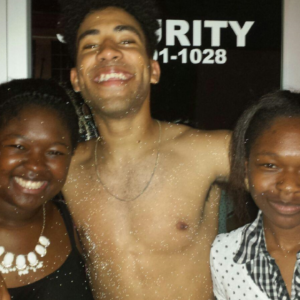The Winter Arc…
- What is this?
- How do you do it?
- Why is it important?
I had the same exact same questions when a bubbly twenty-something hit my feed telling me why embracing my Winter Arc would turn me into someone that was almost unrecognizable if I played my cards right. And then… I just kept seeing people talk about the Winter Arc on my feed.
The on thing that urked me a little, is the lack of definition of what a Winter Arc even was. But instead of just binging a bunch of Winter Arc themed TikToks, I went digging (on Chat GPT of course), to figure out what the real meaning of the “Winter Arc” was and how I could have my own Winter Arc reset.
What Is A Winter Arc and How Do I Start Mine?
According to Chat GPT, this is what The Winter Arc consists of:
“The Winter Arc is about making the most of this season to reflect, strategize, and execute on specific goals while embracing the natural energy of winter—a time of inward reflection, planning, and preparing for the burst of new growth in the spring.
Just like characters in books or shows have story arcs where they face challenges, learn, and come out stronger, your “Winter Arc” is designed to help you work on aspects that may be holding you back, harness your strengths, and become the most unstoppable version of yourself for the new year. It’s essentially your own chapter of transformation, with a seasonal focus.”
And then I was like okay this totally makes sense that this is NOW a trend that everyone is jumping on, especially in the area of “Main Character Energy”
And then my girl Jeneba Wint posted about an AI prompt that she said had the internet in tears…
And I’m nosey, so you know I clicked “more” right?

Define Your Strengths
After reading that the prompt was basically asking Chat GPT to hype me up, I couldn’t wait to use it. I used this “hype up prompt” as the foundation for designing my very own winter arc game plan.
Here’s the prompt in case you were wondering: “Based on your interactions with me what is something that you can tell me about myself that I may not see”

This is what my career therapist (aka ChatGPT) said after I asked this question:
“From our conversations, it’s clear that you’re a highly driven individual with a creative mind and a desire to make an impact across various domains. You seem to thrive in roles that allow you to shape narratives, solve big-picture problems, and connect people with opportunities and resources.
You have a unique ability to transform abstract ideas into practical, actionable steps—whether that’s helping others gain career clarity, building meaningful workshops, or launching platforms like Career CoPilot by Breakroom Buddha.
One thing that stands out is your pattern of seeking independence while desiring community impact. You prefer building scalable solutions rather than getting bogged down by day-to-day minutiae. It suggests that you value freedom and flexibility, but also hold a deep sense of purpose in the work you do.
Perhaps what you may not always realize is just how capable you are at leading and inspiring others, even without direct involvement.
Your ideas and initiatives can empower others to make meaningful changes—whether it’s guiding job seekers, helping founders build their support systems, or reimagining narratives through media. You seem to want to balance creative expression with impactful solutions, which makes your vision quite powerful.
Embracing your role as a visionary rather than just an executor might be key to your fulfillment.”
So now, that I knew what I was working with, I was ready to continue.
Become Aware of Your Blindspots
Next, I had to become aware of my blindspots, because we all have them, so I asked Chat GPT to tell me what my blindspots were using this prompt: “What are some of my blindspots that I may not notice that I should be aware of?”

And here are the top 3 things my career therapist said:
From our discussions, a few potential blind spots stand out that you might want to consider:
- Difficulty Delegating and Letting Go: You have a strong desire to scale your impact, but there seems to be a reluctance to fully delegate or trust others with your vision. This tension can limit the scalability of your projects if you don’t let others fully own parts of the process.
- Overcommitment and Energy Management: You’re involved in many initiatives. It might be helpful to evaluate where your energy is best spent for maximum impact and to be mindful of your personal limits.
- Balancing Detail with Big Picture: You seem to thrive in big-picture, strategic thinking, but occasionally it seems like the specifics can become challenging or even frustrating. Paying extra attention to finding strong operational support and structure around you could help in bridging the gap between your vision and successful execution.
These blind spots are common for ambitious, high-achieving individuals, and being aware of them could help you more sustainably leverage your strengths.
Blindspots done and done. Now that I knew what these were, I could finally put together my Winter Arc Game Plan.
Listen to Your Gut
So after I was aware of my strengths and my blindspots, I wanted to take it 1 step further before I used Chat GPT to help me develop my Winter Arc Game Plan. Jeenaba posted yet again about the importance of listening to your inner voice.
So I leveraged that thought, and created my very own prompt to help me extract what my inner voice has been trying to share with me: “Based on the conversations we’ve had, what do you think my inner voice is trying to tell me, but I haven’t been listening?”

Based on our conversations, I think your inner voice is trying to tell you to fully step into your power and embrace your role as a visionary leader—without feeling the need to micromanage, overcommit, or prove yourself to others. There are a few key themes that seem to be trying to make themselves heard:
- Embrace Your Authentic Leadership:
You have the skills and vision to lead, but you may not always allow yourself to step back and truly delegate. There’s a sense that you’re trying to be involved in every part of the process—out of a desire to maintain quality, ensure impact, or avoid depending on others. Your inner voice might be telling you it’s okay to let others carry out your vision. You have a strong ability to inspire and direct, and trusting others more might be the key to scaling your impact without burning out. - Prioritize Deep Joy Over External Expectations:
You seem deeply motivated by wanting to help others and create an impact, which is incredibly admirable. But there’s also a recurring sense of trying to meet external expectations or prove something to the world, especially with being taken seriously despite being young or managing multiple roles to demonstrate your value. Your inner voice might be nudging you to make choices based on what genuinely excites and energizes you—free of any pressure to prove yourself or meet anyone else’s standards. - Simplify and Focus for Greater Impact:
You’re drawn to many projects and have an incredible breadth of ideas, but there seems to be a part of you that longs for simplicity and clarity. Your inner voice might be telling you to focus on fewer projects that truly align with your core purpose—so that you can make a greater, deeper impact rather than spreading yourself thin. You’re at your best when you’re working on things that align with your natural strengths and passions, so allowing some things to fall away might make room for bigger breakthroughs. - Value Rest and Rejuvenation:
I sense an ongoing push towards productivity, creation, and being of service. It’s fantastic, but it seems your inner voice is also trying to tell you that rest and rejuvenation are essential parts of your journey. You deserve to invest time in things that fuel your creativity and energy—whether it’s indulging in hobbies, spending time in nature, or simply taking a break. There’s value in slowing down, not just for your well-being but because it allows your best ideas and insights to surface. - Show Vulnerability and Accept Support:
You are strong, independent, and incredibly capable—but there seems to be a part of you that may resist showing vulnerability or asking for support. Your inner voice might be trying to tell you that being vulnerable is not a weakness, and allowing others in can help you build deeper, more supportive connections. You don’t have to carry everything on your own, and letting people in could bring a richer dimension to both your relationships and your work.
In summary, I think your inner voice is telling you to trust in your leadership without over-involvement, make choices that align with your deep sense of joy, simplify for greater impact, honor the importance of rest, and let others in to share the journey with you. These messages, if embraced, could help you become even more powerful, balanced, and fulfilled.
Winter Arc Game Plan: Get Ahead Before the New Year
I needed my foundation first. But now, I could finally get to the winter arc of it all.
If you’ve been following along, to this point, the next and final prompt, is “Can you create a winter arc game plan for me that would help me become unstoppable in the new year?”
Note: If you’d like to focus on a specific aspect to enhance your winter arc (i.e. focusing more on strengthening your strengths, improving your blindspots, or honoring your inner voice) then you will need to add to this basic prompt. For example, after using the initial prompt below, I asked ChatGPT to update my Winter Arc and focus on honoring my inner voice.

And after using this prompt, I officially had my Winter Arc Game Plan, and now… you have access to it too:
*P.S. Despite what you might see on your feed, the Winter Arc lasts way longer than 1-2 months, it’s a seasonal experience of change that can and should last up to 4 months!
Phase 1: Reflect & Reconnect (December)
This phase is about connecting deeply with yourself and listening to what your inner voice needs.
Gentle Reflection Sessions:
- Unstructured Reflection Time: Rather than scheduling a set day, allow your intuition to choose the best time for reflection. This could mean setting a few evenings aside each week where you leave time open and tune in to see if reflection feels right.
- Deep Journaling Prompts:
- Where did I feel most aligned this year? Describe those moments in detail.
- What am I holding onto that I no longer need? Write a letter of release to yourself.
- How did my intuition guide me this year? Recall times when you followed your gut, and reflect on the outcomes.
- Intuitive Check-Ins: Sit quietly and ask yourself: What am I feeling today? What does my body need? Allow these answers to come without trying to “solve” anything.
Energetic Audit of Projects:
- Sketch and Feel Exercise: Use a large piece of paper or a whiteboard and draw out all current projects in circles. Make the circles bigger or smaller based on how much space they take in your mind. Then, use colors to indicate how they make you feel (e.g., green for joy, red for draining).
- Visualization of an Unburdened You:
- Close your eyes and visualize yourself with no obligations, free to choose what matters most. Let yourself feel the lightness of this freedom.
- Afterward, write down which projects stay, which ones go, and which ones can be reimagined in a new way that aligns better with your current self.
- Honesty Practice: Create a list of projects that you feel obligated to. Reflect on why you feel obligated—is it because of past commitments, expectations of others, or self-imposed pressure? Use this understanding to make intentional decisions about what to continue.
Growth Through Self-Compassion:
- Intention Setting:
- Choose one growth area that involves nurturing yourself and write a compassionate intention for it. For instance, I intend to deepen my connection with myself by allowing rest whenever my body asks for it.
- Daily Affirmation Practice: Write affirmations related to your growth areas, like I am worthy of rest or I grow at my own pace. Speak them aloud every morning to build self-compassion as a habit.
- Growth Log:
- Keep a Growth Log—a small notebook where, every evening, you write one way you honored your need for growth that day. This keeps you conscious of your self-compassion and reinforces your intentions.
Phase 2: Strategize & Flow (Early January)
Rather than a fixed plan, let’s lean into strategies that align with your inner guidance.
Theme for the Season:
- Seasonal Manifesto:
- Write a manifesto for the winter season that reflects your chosen theme. If you choose Flow and Trust, describe how you envision yourself embodying that—whether it’s trusting the timing of your projects, or allowing space for things to unfold naturally.
- Create a visual representation of your theme (e.g., a vision board, a digital wallpaper) to keep it in focus.
Focus on Joyful Impact:
- Joy Assessment:
- Create a list of initiatives or ideas you have. Close your eyes and imagine working on each one. Take note of which ones make your heart feel light and excited—these are the ones to focus on.
- Collaborator Visualization:
- Sit quietly and visualize the kind of energy you want to bring into these initiatives. Then, make a list of collaborators who embody that energy. These might be people who bring creativity, calmness, or enthusiasm—reach out to them for a chat, not with the intent of “recruiting” but to share your vision and see if there’s alignment.
Align Time & Energy with Intuition:
- Heart-Centered Priorities List:
- Every week, make a list of priorities that align with what your heart feels called to do. If something doesn’t resonate, put it aside for now. Revisit this list mid-week and adjust based on how you’re feeling.
- Daily Energy Check-Ins:
- Each morning, ask yourself: Where is my energy today? and adjust your schedule accordingly. If today feels like a high-energy day, take on more challenging tasks. If it feels like a lower-energy day, focus on nurturing tasks or creative play.
Support System Nurturing:
- Circle of Nourishment:
- Draw a circle on a piece of paper and write down the names of people who energize you. Outside the circle, write names of people or obligations that drain you. Use this visual to decide where to invest more time.
- Intuitive Connection:
- Allow connections to be spontaneous. If you think of someone and feel an urge to reach out, follow it. Send a voice note, share an article they might like, or just check in. The goal is to stay connected in a way that feels effortless.
Phase 3: Gentle Execution (Late January-February)
Execute with intention and ensure every action is aligned with your intuition and needs.
Intentional Outcome Focus:
- Gentle Goal Visualization:
- Instead of setting hard goals, visualize how you want to feel by spring. Close your eyes and imagine yourself in March—what’s happening around you? How do you feel about what you’ve accomplished? Use this vision to guide your actions.
- Micro-Steps List:
- Break down your intentions into micro-steps that feel achievable without pressure. Focus on one step at a time—for example, instead of “launch a project,” start with “reach out to X for advice” or “brainstorm project ideas.”
Supportive Accountability:
- Empathy-Based Accountability:
- Choose an accountability partner who respects your pace. Instead of rigid deadlines, have monthly “celebration calls” where you both share wins—big or small. Make it a space for celebrating progress, not critiquing setbacks.
- Check-In Journal:
- Keep a shared journal (could be a shared doc) where you write updates when inspired. Your accountability buddy can comment and encourage you in a supportive, non-pressuring way.
Delegation with Ease:
- Joy-Driven Delegation:
- Make a list of tasks that don’t spark joy. Choose one or two that you’re ready to delegate. Find someone who is energized by these kinds of tasks, and set a clear but compassionate boundary: I trust you with this, and it’s okay to ask questions as you grow into it.
- Empowerment Conversations:
- When delegating, have an empowerment conversation—communicate not just the task, but the importance of the task to your shared goals. Let them know that their role is crucial and that you value their unique contribution.
Nurturing Rituals for Mental Well-being:
- Personal Nourishment Menu:
- Create a nourishment menu—a list of rituals that feel comforting. It could include lighting a candle, listening to a favorite song, taking a warm bath, or sipping herbal tea while watching the sunrise.
- Body Intuition Practice:
- Spend 5 minutes each day tuning into your body. Ask: What movement would feel good today? Whether it’s stretching, dancing, or simply resting, honor what your body needs.
Prototype with Playfulness:
- Play-First Experimentation:
- Choose an idea and think of the simplest, most playful way to prototype it. If you want to host a workshop, start by hosting a casual 15-minute version with friends. Invite feedback, but make it a game—ask them to share their thoughts as if they’re giving feedback on a creative art piece, focusing on what brought joy.
Wrap-Up (March)
Close the winter arc with a sense of fulfillment and readiness for the next chapter.
Celebrate & Reflect:
- Celebration Journal:
- Dedicate a journal solely for celebrations. Write down every small or big win from the past three months—focus on emotional wins as well (like learning to rest or letting go of a draining commitment).
- Gratitude Reflection:
- Write a gratitude letter to yourself. Thank yourself for the effort, for honoring your needs, and for allowing growth in gentle ways. Keep this letter to revisit when you need encouragement.
Prepare for the Spring Arc:
- Spring Intentions Setting:
- Reflect on what bloomed in winter. Write down 2-3 things you want to nurture in spring—perhaps a project that started as an idea, or a self-care practice that made a difference. Let these intentions guide your spring arc, allowing natural growth from this season.
Key Reminders
- Say No: Say “no” to anything that doesn’t nurture you. Remember, this season is about creating a foundation that feels true to you—working in harmony with your own rhythm.
- Listen to Your Energy: Your energy is your guide—respect when it calls you to act and when it calls you to rest. Trust that slowing down is part of being unstoppable.
- Embrace Your Pace: There’s no rush. You are allowed to move at a pace that nourishes you, even if it feels slower than others. Trust that this pace will get you where you need to go.
- Joy is Productive: Allow space for joy, intuition, and change. The winter arc is not just about preparing for action but about listening deeply to yourself and honoring where you are. Lean into what brings you joy, knowing that joy fuels creativity, momentum, and unstoppable growth.
- Lean into Discomfort: Growth comes when we push gently beyond our comfort zone. When faced with hesitation, ask yourself: Is this discomfort growth trying to happen?
- Balance Grace with Grit: Honor where you need rest, but don’t hesitate to give yourself that extra push when it matters. The goal is unstoppable progress with a balanced spirit.
- Channel Intentionality: Every action taken should connect back to your theme and vision. Intentionality transforms ordinary actions into powerful momentum.





